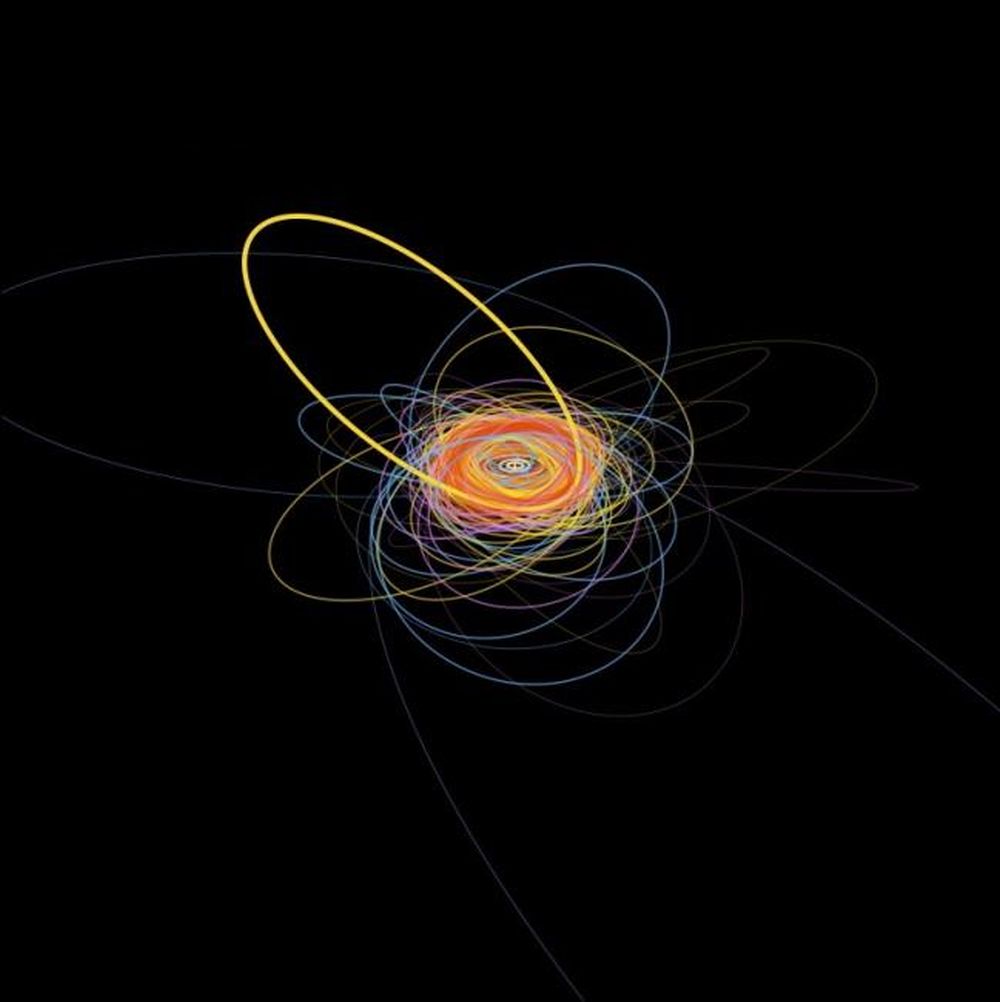Objects in the Solar System can stand out for different reasons. Some of them are bright, some of them get too close to Earth for comfort, and others have incredible surface features or unusual compositions. But some objects stand out for their orbits. Those include Trans-Neptunian Objects (TNO).
The Large inclination Distant Objects (LiDO) survey is aimed at finding TNOs and has found 148 of them so far. LiDO’s findings place constraints on our models of how the Solar System’s gas giants have migrated, and on how TNOs took up their current orbits.
Now LiDO has discovered the first object that moves in concert with Neptune. It’s named 2020 VN40, and it orbits the Sun once for every ten times that Neptune orbits it, meaning it’s in a 10:1 orbital resonance.
The discovery is in a paper published in The Planetary Science Journal titled “LiDO: Discovery of a 10:1 Resonator with a Novel Libration State.” The lead author is Rosemary Pike. Pike is a researchers at the Harvard–Smithsonian Center for Astrophysics.
“This new motion is like finding a hidden rhythm in a song we thought we knew. It could change how we think about the way distant objects move.” – Ruth Murray-Clay, UC Santa Cruz.
The Solar System is a gigantic puzzle with multitudes of moving pieces. Though the planetary orbits aren’t subject to much change at this late stage in the Solar System’s history, their past movements affected the orbits of smaller bodies. The population of the main asteroid belt and the TNOs have had their orbits shaped through interactions with other larger bodies.
About 600 million years after the Solar System formed, according to the Nice model, the giant planets had a period of orbital instability. This period had a dramatic effect on the objects in the Solar System’s outer reaches. Countless small bodies were scattered and redistributed. During this time, Neptune migrated outward, trapping some bodies in orbital resonances. 2020 VN40 is one of those objects, and studying it can help scientists understand the evolution of the Solar System.
“This is a big step in understanding the outer solar system,” said lead author Pike in a press release. “It shows that even very distant regions influenced by Neptune can contain objects, and it gives us new clues about how the solar system evolved.”
The LiDO survey searches for objects with orbits that reach far above and below the ecliptic plane. This part of the Solar System is not well-studied, yet its population has something to tell us about the Solar System’s history.
“The LiDO survey was designed to discover TNOs and track those discoveries over two additional years,” the research paper states. “The 10:1 resonator discovered in the survey, 2020 VN40, was tracked from 2020 August until 2022 October as part of the main LiDO Survey.” Other data was used to improve the object’s orbit, including the Gemini North Telescope, data from the ESA’s Gaia mission, and archival images from the Subaru Telescope. “This improved orbit was sufficiently precise to conclusively identify this TNO as resonant in Neptune’s 10:1 MMR,” the paper states.
There was still some uncertainty in 2020 VN40’s orbit, and to remove it, researchers simulated 200 clones based on the astrometric uncertainties. Those simulations confirmed that the object is indeed in a 10:1 resonance with Neptune. However, that won’t last forever.
This figure shows the 200 simulated clones. The top shows the libration center, the middle shows their orbital inclination, and the bottom shows their eccentricity. The black star is 2020 VN40’s nominal orbit, and the two black squares are clones that aren’t resonant at time zero. The color scale on the right indicates how long each clone spent in the first period of resonance. “The cloned orbits are all consistent with the object’s astrometry,” the authors write. “These orbits provide a statistical overview of the likely behavior of the TNO over time.” Image Credit: Rosemary E. Pike et al 2025 Planet. Sci. J. 6 156
The researchers simulated the object for one billion years, and explain that the resonance will be stable for at least 30 million years. After that, the odds change. Half of the clones leave the orbit and are scattered after 300 million years. After 900 million years, only three of the simulated clones are still resonant, and only one is after 990 million years.
“It has been fascinating to learn how many small bodies in the solar system exist on these very large, very tilted orbits,” said Dr. Samantha Lawler, a core member of the LiDO team from the University of Regina in Canada. The object’s semi-major axis, it’s average distance from the Sun, is about 140 times greater than Earth’s, and follows a very tilted path around the solar system.
Most objects in orbital resonances with Neptune come closest to the Sun when Neptune is far away. But 2020 VN40 is different. Its perihelion occurs when Neptune is also near its perihelion. However, because 2020 VN40’s orbit is so tilted, the two are actually not that close to one another. No other resonant TNOs are like this.
“This new motion is like finding a hidden rhythm in a song we thought we knew,” said study co-author Ruth Murray-Clay from UC Santa Cruz. “It could change how we think about the way distant objects move.”
The discovery of 2020 VN40 and its orbit suggests that highly-tilted orbits like its can generate new types of motion that astronomers never expected to find. They’ll likely have an opportunity to learn much more when the Vera Rubin Observatory begins its ten-year Legacy Survey of Space and Time(LSST). Astronomers expect the LSST to find many more TNOs, allowing scientists to generate a deeper understanding of TNOs, their unusual, orbits, and many other aspects of the Solar System.
“This is just the beginning,” said Kathryn Volk of the Planetary Science Institute. “We’re opening a new window into the solar system’s past.”
